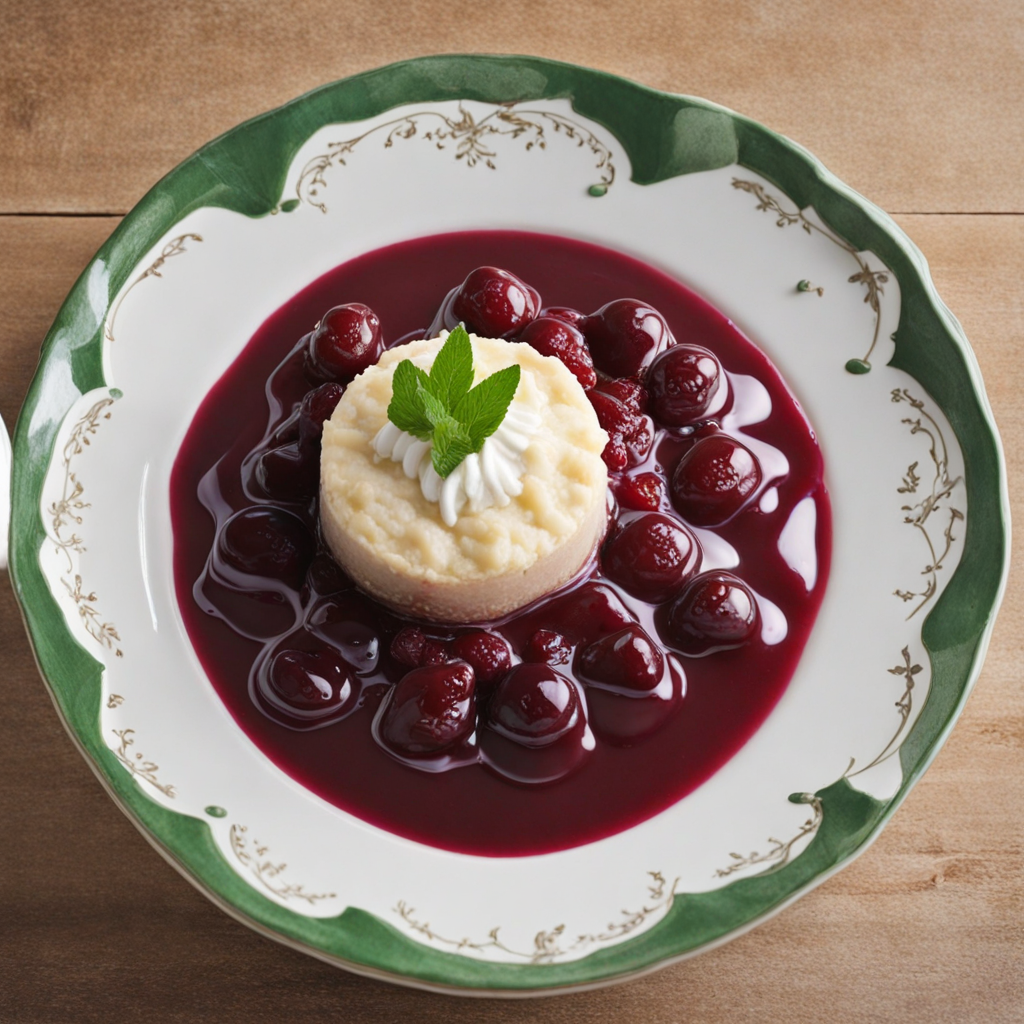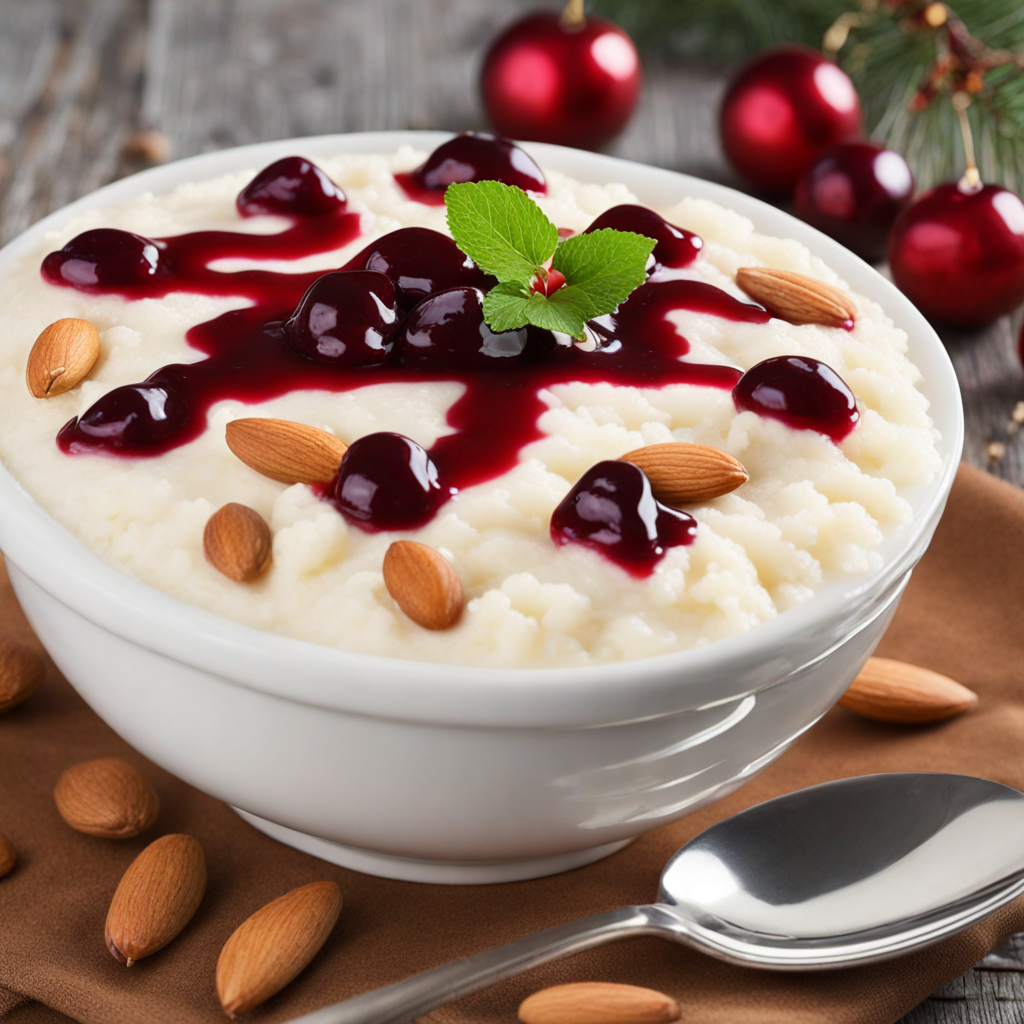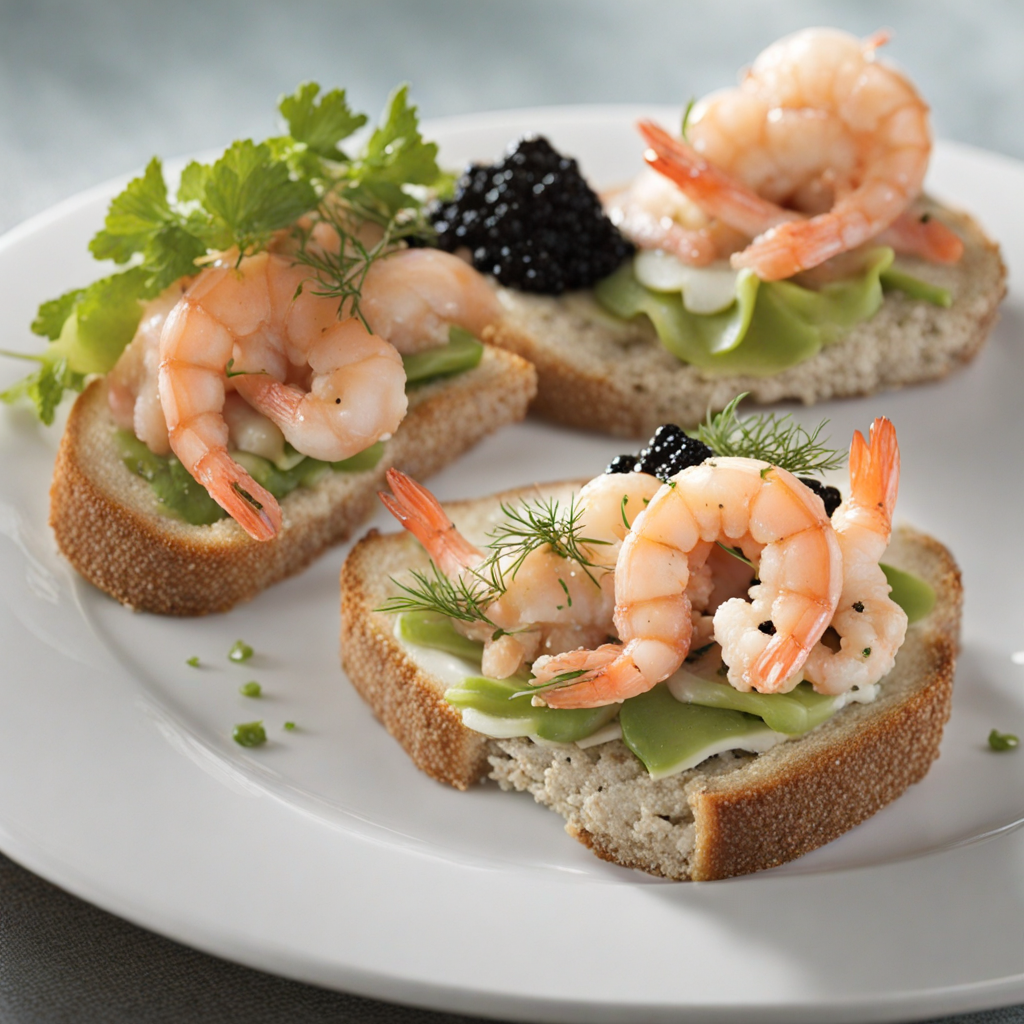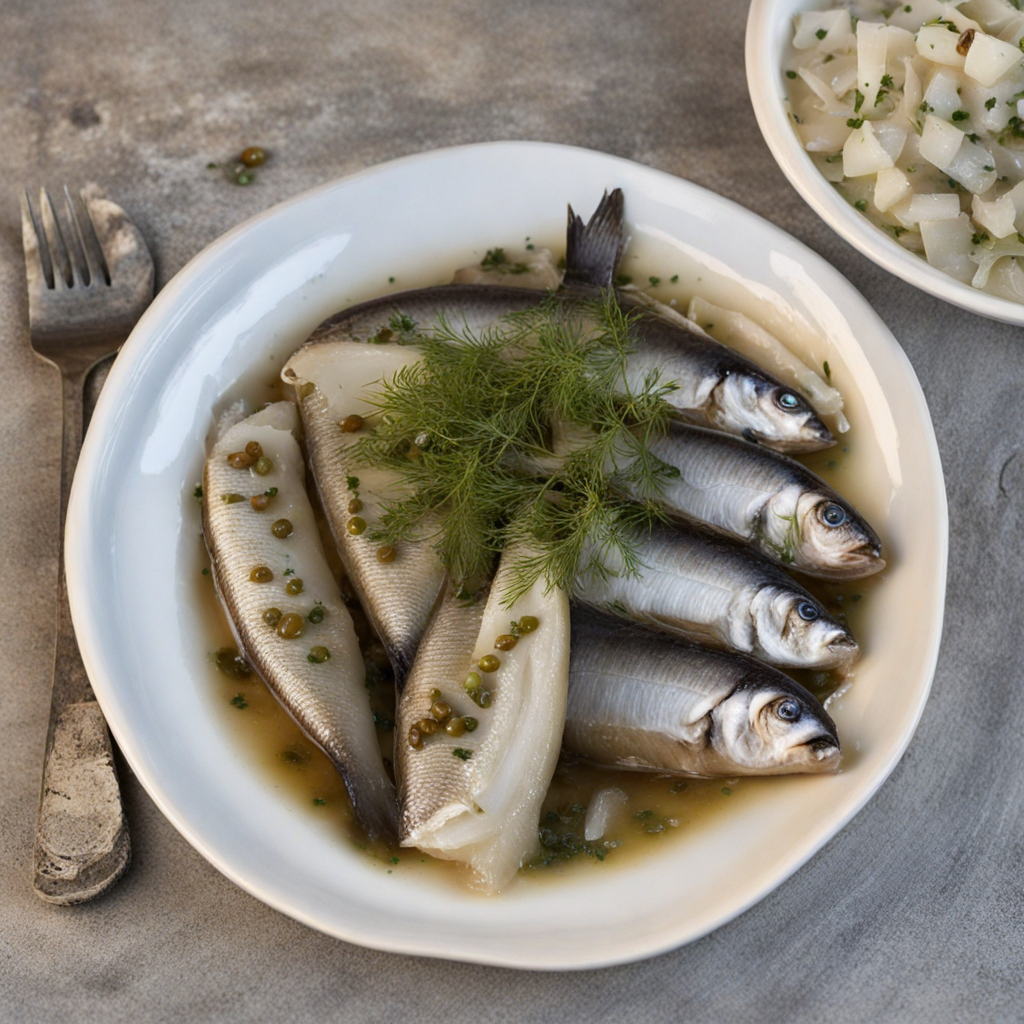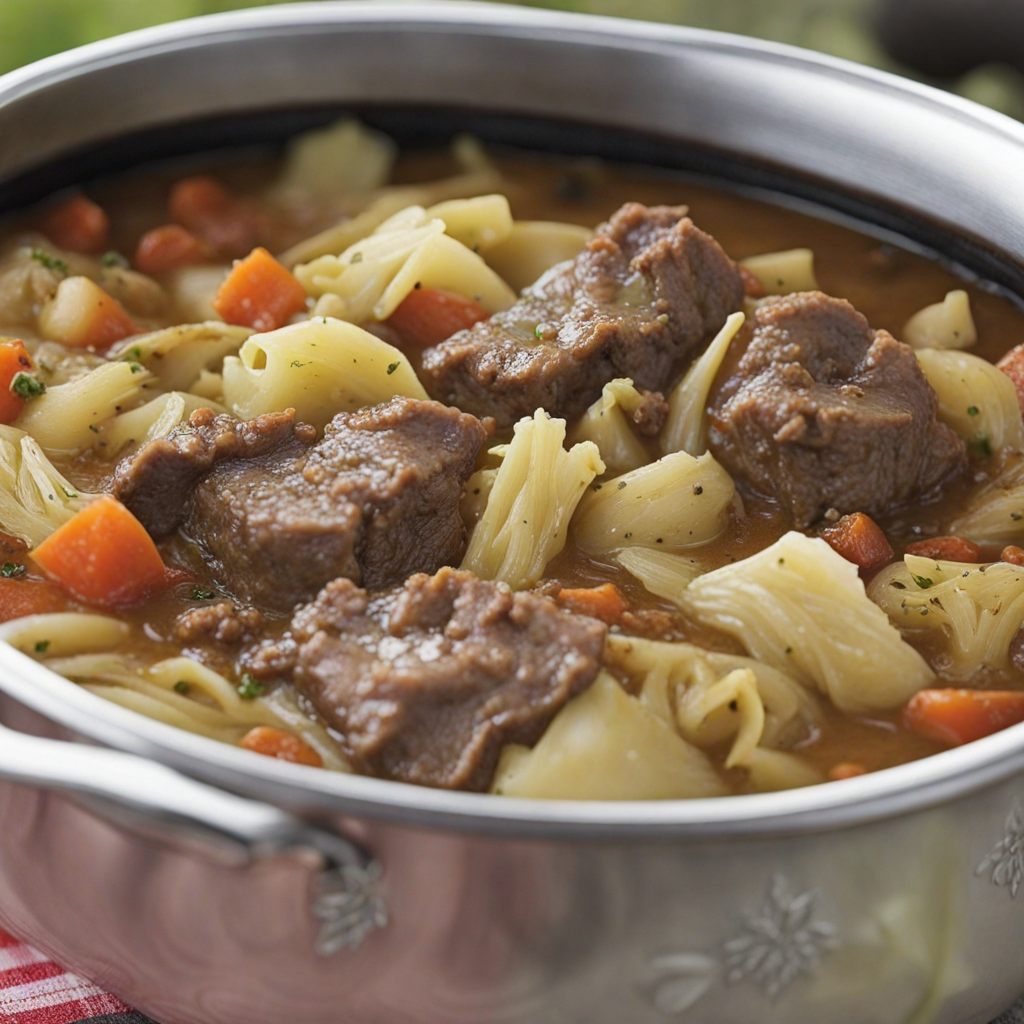Risalamande
Risalamande is a traditional Danish dessert that embodies the essence of comfort and festivity, often enjoyed during the Christmas season. At its core, this dish is a creamy rice pudding made from short-grain rice simmered in milk until tender and luscious. The rice is typically combined with vanilla for a delicate aromatic profile, which elevates the dish beyond a simple pudding. Once cooked, the rice is mixed with whipped cream to create a light, fluffy texture, making it a delight to scoop and savor. In addition to its creamy base, Risalamande is uniquely flavored with chopped almonds, which add a satisfying crunch and a nutty depth to each bite. Traditionally, a whole almond is hidden within the pudding, and the person who finds it is said to receive a small gift or is crowned the winner of the dessert. This playful element makes Risalamande not only a treat for the taste buds but also a source of fun and excitement during festive gatherings. The dish is usually served cold and is often accompanied by a warm cherry sauce, which provides a delightful contrast to the creamy texture of the pudding. The tartness of the cherries balances the sweetness of the Risalamande, creating a harmonious blend of flavors. Each spoonful offers a delightful mix of creamy, nutty, and fruity notes that encapsulate the spirit of Danish culinary tradition, making it a must-try for anyone looking to explore new and delightful desserts.
How It Became This Dish
The Sweet History of Risalamande: Denmark's Festive Delight #### Origins and Early Development Risalamande, a traditional Danish dessert, is a creamy rice pudding that has become synonymous with Christmas in Denmark. Its name is derived from the French term "ris à l'amande," which translates to "rice with almond." This connection to French cuisine suggests that the dish may have roots in the 19th century, during a time of increasing cultural exchange between Denmark and France. However, its precise origins are somewhat murky, blending local traditions with influences from other European culinary practices. The base of risalamande is a simple rice pudding made from short-grain rice, milk, sugar, and vanilla. Traditionally, it is thickened with whipped cream and flavored with chopped almonds, creating a rich and indulgent dessert. The addition of almonds is particularly significant; they were considered a luxury item in Denmark, often reserved for special occasions. The use of whipped cream adds a lightness, balancing the dish's sweetness and enhancing its festive appeal. #### Cultural Significance Risalamande is more than just a dessert; it is a cultural symbol of Danish Christmas celebrations. Its most significant role occurs during the festive season, particularly at the traditional Christmas dinner known as "julefrokost." On Christmas Eve, Danish families gather to enjoy a lavish meal, culminating in the serving of risalamande as the grand finale. The dish is often accompanied by cherry sauce, which adds a tart contrast to the sweetness of the pudding. One of the most beloved traditions associated with risalamande is the hidden almond game. A whole almond is discreetly added to the pudding before serving, and the person who finds it is said to enjoy good luck for the coming year. This playful aspect creates a sense of anticipation and excitement during the dessert course, fostering a spirit of togetherness and joy among family members. The person who discovers the almond is often rewarded with a small gift, further enhancing the festive atmosphere. #### Risalamande Through the Ages As Denmark entered the 20th century, risalamande solidified its place in the culinary landscape. The dish became a staple at Christmas feasts, reflecting the growing importance of family traditions and the celebration of Danish identity. During this period, the recipe for risalamande evolved, with various regional interpretations emerging. Some families began to incorporate additional flavors, such as orange zest or cinnamon, while others experimented with different types of nuts or fruits. In the post-World War II era, with the rise of consumer culture and the availability of processed ingredients, the preparation of risalamande became more accessible to the average Danish household. Ready-made rice pudding mixes and canned cherry sauce made it easier for busy families to enjoy this traditional dessert without extensive preparation. However, many families still maintained their own heirloom recipes, passed down through generations, which emphasized the importance of homemade, quality ingredients. #### The Role of Risalamande in Modern Danish Society Today, risalamande remains a cherished holiday treat enjoyed by Danes of all ages. Its popularity has extended beyond Christmas, with many people indulging in this creamy dessert at other festive occasions, such as birthdays and weddings. The dish's versatility allows for adaptations to suit personal tastes, making it a beloved favorite that can be tailored to contemporary palates. In recent years, there has been a resurgence in interest in traditional Danish cuisine, spurred by the New Nordic Food movement. Chefs and home cooks alike are exploring the roots of Danish culinary heritage, reimagining classic dishes like risalamande while honoring their historical significance. This trend has led to innovative variations of risalamande, such as vegan or gluten-free versions, ensuring that the dessert remains relevant in a diverse culinary landscape. #### Risalamande and Global Influence The Danish diaspora has also played a role in spreading the enjoyment of risalamande beyond Denmark's borders. As Danes settled in other countries, they brought their culinary traditions with them, introducing risalamande to new audiences. In places like the United States and Canada, Danish communities celebrate the holiday season with a nod to their heritage by preparing traditional dishes, including risalamande. This cross-cultural exchange has allowed risalamande to gain recognition as a unique dessert, contributing to the global appreciation of Scandinavian cuisine. Moreover, the global interest in food culture has led to the inclusion of risalamande in various food festivals and culinary events. Chefs are now showcasing this traditional dessert in modern gastronomy, often putting their own spin on it while still respecting its roots. This blend of tradition and innovation has ensured that risalamande continues to captivate food enthusiasts worldwide. #### Conclusion: A Dish of Tradition and Togetherness Risalamande stands as a testament to the rich culinary history of Denmark, embodying the essence of celebration, family, and tradition. Its evolution from a simple rice pudding to a cherished holiday dessert reflects broader societal changes, including shifts in food availability, cultural exchanges, and the enduring importance of family customs. As Danish families continue to gather around the table to enjoy risalamande during the festive season, they not only indulge in a delicious dessert but also partake in a centuries-old tradition that brings them closer together. The hidden almond game and the accompanying cherry sauce enhance the experience, creating cherished memories that will be passed down to future generations. In an ever-changing food landscape, risalamande remains a beloved symbol of Danish holiday spirit—a reminder that, at its heart, food is about connection, celebration, and the joy of shared experiences. Whether enjoyed in a cozy Danish home or at a festive gathering abroad, risalamande serves as a delicious bridge between the past and the present, continuing to delight taste buds and warm hearts alike.
You may like
Discover local flavors from Denmark


